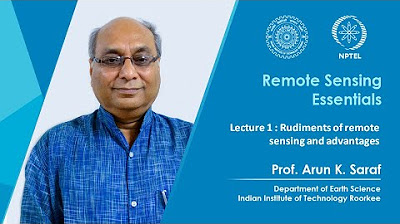Geological prospecting - Geological prospecting methods - Geological prospecting indications
Summary
TLDRGeological prospecting is a multi-disciplinary process that uses geological, geophysical, geochemical, and remote sensing techniques to discover and evaluate valuable mineral resources beneath the Earth's surface. It involves fieldwork, laboratory analysis, and advanced technologies to gather data on subsurface materials. The process includes regional reconnaissance, detailed exploration, drilling for core samples, and resource assessment. Prospecting and exploration are critical for sustainable development of mineral resources, ensuring economic growth while minimizing environmental and social impacts.
Takeaways
- 🔍 **Geological Prospecting**: It's the process of searching for valuable geological resources like minerals, oil, and gas using observable clues or anomalies.
- 🌏 **Indications**: Observable clues like color changes in rocks, geochemical anomalies, and geophysical anomalies are critical for guiding exploration efforts.
- 📊 **Mineral Alterations**: Changes in rock color or patterns, known as zoning, can indicate the presence of valuable minerals.
- 🧪 **Geochemistry**: Elevated concentrations of specific elements in rock, soil, or water samples can signal the presence of minerals or metals.
- 🌌 **Geophysical Anomalies**: Variations in gravity and magnetic fields can suggest subsurface structures associated with mineral deposits.
- 🏔️ **Structural Features**: Geological structures like faults and folds can create conditions favorable for mineral concentration.
- 🌿 **Veins and Shear Zones**: The presence of mineralized veins or shear zones can indicate potential for economically significant mineral deposits.
- 📖 **Minerological Assemblages**: Certain indicator minerals, associated with specific types of mineral deposits, can signal potential nearby mineralization.
- 🗺️ **Topographic Features**: Landforms and changes in drainage patterns can be visible indicators of subsurface mineralization.
- 🔬 **Geological Context**: Understanding the stratigraphy of an area is crucial for identifying potential mineral deposits within specific rock units.
- 🚧 **Mining Prospecting and Exploration**: These are systematic and scientific processes to discover, evaluate, and delineate mineral deposits for commercial extraction.
- 🛠️ **Methods**: Geological mapping, soil sampling, geophysical surveys, drilling, and remote sensing are some of the interdisciplinary approaches used in exploration.
- 📈 **Resource Estimation**: After exploration, geological and engineering data are used to estimate the quantity and quality of mineral resources.
- 🏭 **Feasibility Studies**: These studies evaluate the technical, economic, environmental, and social aspects of mining operations before development begins.
Q & A
What are geological indications in prospecting?
-Geological indications are observable clues or anomalies in the Earth's surface or subsurface that suggest the presence of valuable geological resources such as mineral deposits, oil, and gas reservoirs.
Why are mineral alterations important in geological prospecting?
-Mineral alterations, such as color changes in rocks and soils, can indicate the presence of minerals. For example, iron oxides may create red or yellow staining, and certain zoning patterns can be key indicators of potential mineral deposits.
How do geochemical anomalies help in identifying mineral deposits?
-Anomalous geochemical values, such as elevated concentrations of specific elements in rock, soil, or water samples, can indicate the presence of minerals or metals, guiding prospectors to potential deposits.
What role do geophysical anomalies play in geological prospecting?
-Geophysical anomalies, including variations in gravity and magnetic fields, can suggest the presence of subsurface structures or density anomalies associated with mineral deposits, helping to guide prospectors.
How do structural features like faults and folds contribute to mineralization?
-Structural features like faults and folds can create favorable conditions for the concentration of minerals. Mineral deposits often form along these structures due to the movement and deformation of the Earth's crust.
What is the significance of indicator minerals in prospecting?
-Indicator minerals are certain minerals associated with specific types of mineral deposits. The presence of these minerals in surface or subsurface samples can signal the potential for nearby mineralization.
How do topographic and morphological features aid in geological prospecting?
-Certain landforms and changes in drainage patterns can be visible indicators of subsurface mineralization, guiding prospectors to potential deposit locations.
What is the purpose of geological mapping in the prospecting process?
-Geological mapping involves on-site observation and recording of rock formations and structures, providing foundational information needed to identify areas with potential mineralization.
How does drilling contribute to the exploration of subsurface resources?
-Drilling, including core and rotary drilling, is used to extract subsurface samples, providing detailed information about the composition and structure of the subsurface, which helps assess the viability of resource extraction.
What is the goal of exploration following the prospecting phase?
-The goal of exploration is to systematically collect data from both surface and subsurface sources to evaluate the potential of identified areas, quantify the extent of mineralization, and provide data for resource estimation.
How do feasibility studies contribute to the mining industry?
-Feasibility studies evaluate the technical, economic, environmental, and social aspects of mining operations, providing a comprehensive understanding of a project's viability and potential challenges.
Outlines

Dieser Bereich ist nur für Premium-Benutzer verfügbar. Bitte führen Sie ein Upgrade durch, um auf diesen Abschnitt zuzugreifen.
Upgrade durchführenMindmap

Dieser Bereich ist nur für Premium-Benutzer verfügbar. Bitte führen Sie ein Upgrade durch, um auf diesen Abschnitt zuzugreifen.
Upgrade durchführenKeywords

Dieser Bereich ist nur für Premium-Benutzer verfügbar. Bitte führen Sie ein Upgrade durch, um auf diesen Abschnitt zuzugreifen.
Upgrade durchführenHighlights

Dieser Bereich ist nur für Premium-Benutzer verfügbar. Bitte führen Sie ein Upgrade durch, um auf diesen Abschnitt zuzugreifen.
Upgrade durchführenTranscripts

Dieser Bereich ist nur für Premium-Benutzer verfügbar. Bitte führen Sie ein Upgrade durch, um auf diesen Abschnitt zuzugreifen.
Upgrade durchführen5.0 / 5 (0 votes)






